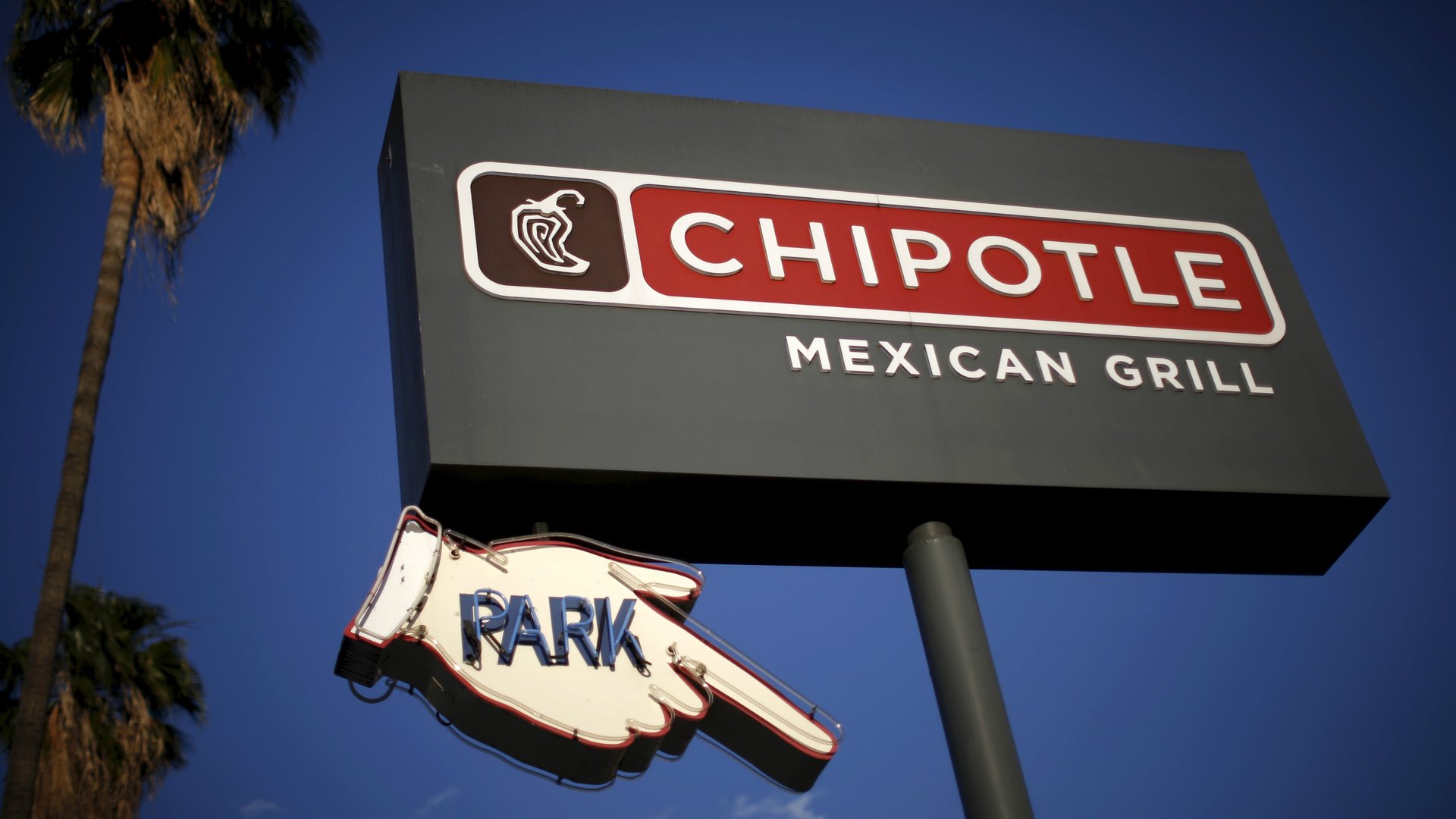After its food safety nightmare, people are eating at Chipotle again
It’s the first bit of good news Chipotle has been able to report for a long time. People are finally starting to get back in line for burritos.


It’s the first bit of good news Chipotle has been able to report for a long time. People are finally starting to get back in line for burritos.
The beleaguered US restaurant chain today (April 25) reported its first-quarter earnings, showing same-store sales grew nearly 18% compared to the same period last year—after five straight quarters of shrinking sales. The company also reported its revenue increased by nearly 28%, compared to the same period in 2016, to about $1 billion.
For more than a year Chipotle has been desperately working to regain the favor of consumers and Wall Street alike, following a food safety-related norovirus outbreak in 2015 that sickened more than 300 people across 14 states, hospitalizing 22. News of the outbreak turned many people off to Chipotle. At one point, the chain’s CEO, Steve Ells, reported foot traffic had dropped by 20%.
The shock of the food safety scare to Chipotle’s business is evident when comparing the chain with its competitors. While other companies have experienced relative stability in their stock prices across the last decade, Chipotle’s meteoric rise was disrupted with a jolting plummet after the norovirus scandal made headlines in 2015.
The scandal rocked the company, which until then had been an irreproachable brand in the fast-casual restaurant sector. The chain was known for boasting about the high-quality sourcing of its ingredients, and became a thorn in the side of large-scale food producers by unleashing several viral ad campaigns casting competitors’ use of preservatives and artificial ingredients as bad for society and the Earth.
But those who fall prey to hubris have a way of unfurling in spectacular fashion.
Not only was the company’s stock hit hard, Chipotle took a $8.7 billion market cap hit in the aftermath of the food safety crises. The droves of customers that once stood in its lines dwindled to a trickle, its chief marketing officer was swept up in a cocaine bust, and the chain suffered the embarrassment of falling below Moe’s Southwest Grill and Baja Fresh in consumer favorability rankings.
The chain’s fall was so dramatic that executives of other fast-casual chains began wondering how they might use the opportunity to help themselves. Panera Bread’s president, Drew Madsen, put it bluntly during an April 2016 call with investors: “Clearly, we live in a post-Chipotle world, where there is elevated focus on food safety at all restaurants. Given these changes, we expect our cost for food safety effort in 2016 to be about $2 million higher than originally targeted.”
And sure enough, Chipotle must now contend with Panera, which in the last year has emerged as a competitive leader in the fast-casual space. As it works to regain the trust of consumers, Chipotle has been raising prices in some markets—including in New York City and Washington, DC—and has even come out with a new ad campaign touting the “realness” of its food.
As food industry analyst Howard Penney put it in a tweet last week, “The road to peak volumes and margins is lined with pot holes.”
We’ll see if Chipotle can continue navigating its way back to where it used to be.